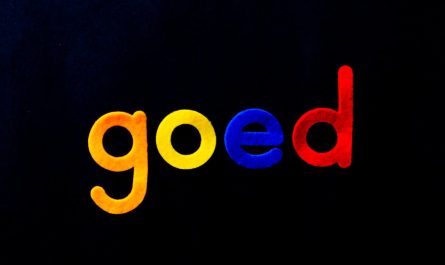Are you looking to improve the management of content from your blog? Create a editorial calendar may seem complicated, but it can really change everything! Follow our practical advice to establish a content strategy efficient and well organized.
Why an editorial calendar is essential
A editorial calendar is not just a simple document. It is a powerful tool that allows you to plan, organize and manage your content production. It gives a clear overview of what you should post and when to do it.
The use of a editorial planning helps maintain consistency in content publishing, which is crucial to attracting and engaging your target audience. This also avoids the stress of last-minute publications.
Maintain consistency in your posts
Have a editorial calendar clear and detailed ensures a certain regularity in your publications. When your readership knows exactly when to expect new articles, they stay loyal and engaged.
This also reduces downtime where you could lose readers. By publishing regularly, you maintain constant interest among your target audience.
Save time and reduce stress
Planning in advance allows you to better manage the time spent on content production. You will have a better vision of the tasks to be accomplished and will thus be able to avoid last-minute unforeseen events.
Plus, you’ll reduce the stress of searching forcontent ideas urgently. With proper planning, you can dedicate more time to the creation and quality of your articles.
Steps to Create an Effective Editorial Calendar
Now that you know why this is so important, let’s move on to the concrete steps to setting up a editorial calendar efficient.
Define your marketing objectives
First of all, clarify your marketing objectives. What do you want to achieve with your content strategy ? Increase traffic to your blog, generate leads, retain your audience? These objectives will determine the nature of your content.
Each item must serve a specific purpose. If your goals are clear from the start, you will be much more effective in implementing your editorial planning.
Identify your target audience
Know your target audience is essential. What are their interests, their challenges, their needs? The more you understand your audience, the better you can tailor your content to engage them.
Conduct research or use analytics tools to gather this information. They will guide your editorial decisions and help you produce relevant articles.
Organize your content ideas
Once you understand your target audience and defined your marketing objectives, start collecting content ideas. Write down all the tracks, even the craziest ones! Later, you will sort everything to keep the ones that best fit your objectives.
To make this step easier, here are some sources of inspiration:
- Frequently asked questions from your audience
- Current trends in your niche
- Comments and discussions on social networks
- Analyzing the performance of your old articles
Structure your editorial calendar
Now it’s time to structure your editorial calendar. To do this, choose the tool that suits you best: Excel table, Google Calendar, Trello, Asana… the important thing is that you are comfortable with it.
Include these items in your calendar:
- Article title
- Publication date
- Author (if you work in a team)
- Targeted keywords
- Production phase (research, writing, proofreading, etc.)
Allocate resources and responsibilities
If you work alone, this aspect will be less complex. On the other hand, if you are in a team, clearly distribute tasks. Who writes what? What day? Who proofreads and corrects the texts? Organize the content production This saves valuable time.
Make sure everyone knows their responsibilities and meets deadlines. From collaboration often comes synergy, and this is the key to content strategy successful.
Content promotion
Your work does not stop at content publishing. You must also think about its promotion to maximize its visibility.
Select broadcast channels
Social networks, newsletters, partnerships, SEO… There are numerous channels to promote your articles. Choose the ones that best suit your target audience and to your marketing objectives.
Don’t hesitate to mix several strategies to reach a wider audience. Good diversification will increase your chances of achieving your goals.
Plan promotional campaigns
Integrate the content promotion directly into your editorial calendar. Plan in advance for posts on social networks, publishing stories, sending newsletters…
By having these tasks scheduled, you maximize the reach of each article and increase their impact on your target audience.
Evaluate and adjust your content strategy
A editorial calendar is never fixed. It requires regular adjustments, based on the performance of your content.
Analyze the results
Use tools like Google Analytics to evaluate the effectiveness of your articles. Observe which topics attracted the most traffic, which pages converted the most, which types of articles best engage your audience.
Tell yourself that there is no magic formula. The key is to continually observe and adjust based on the results obtained.
Adapt future content
Based on your analyses, readjust your content ideas future. For example, if a certain topic generates a lot of interest, consider giving it more space in your editorial planning.
Always adapt your strategy based on the concrete and quantified returns obtained. This flexibility will benefit the durability and efficiency of your content strategy.
Tools to facilitate content management
Finally, let’s use the right tools to optimize our content management. They can make your processes smoother and increase your productivity.
Planning tools
There are various tools to help you plan your content production :
- Trello: Ideal for viewing tasks in the form of cards and moving them according to progress
- Google Calendar: Simple and practical for noting important dates
- Asana: To manage complex projects with large teams
Content Creation Tools
You will also need tools to facilitate content production :
- Grammarly: To check spelling and grammar
- Canva: To create attractive visuals without being a graphic designer
- Google Docs: Perfect for writing and collaborating online
With these tools, plan and execute your content strategy will become child’s play!








